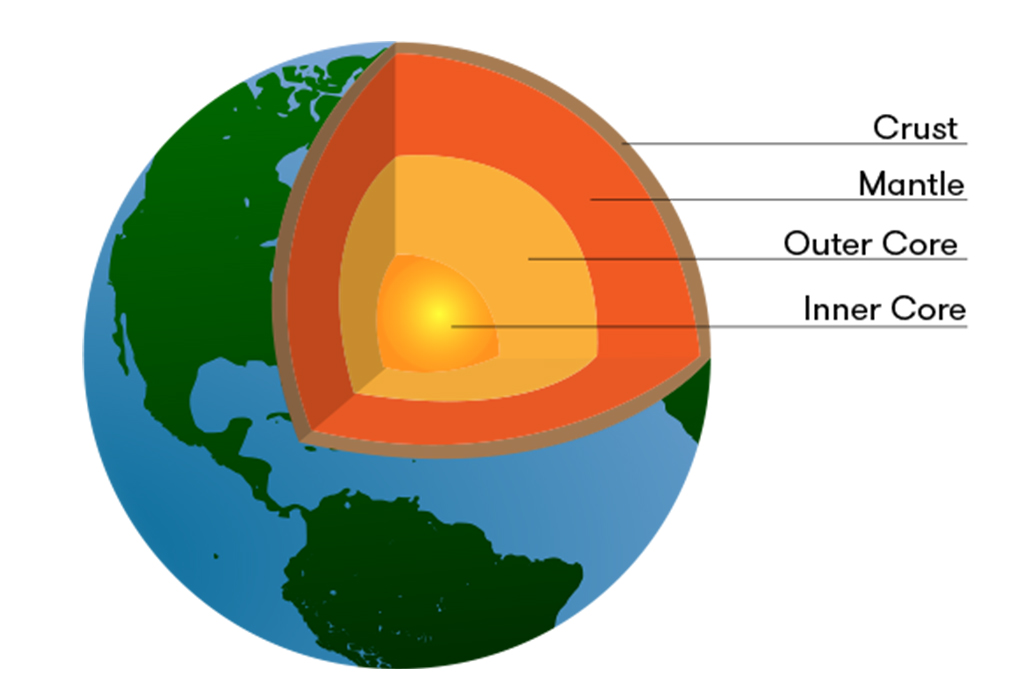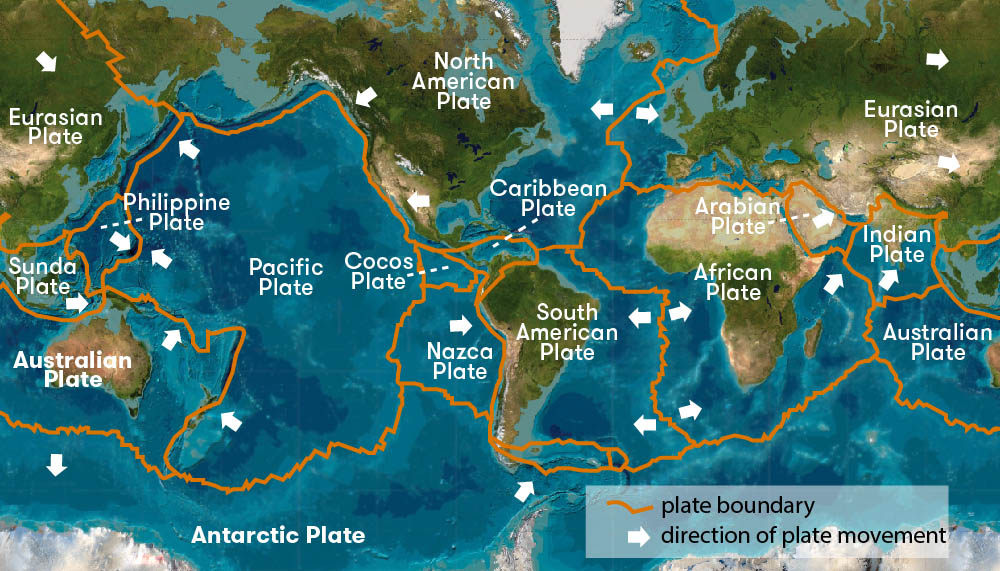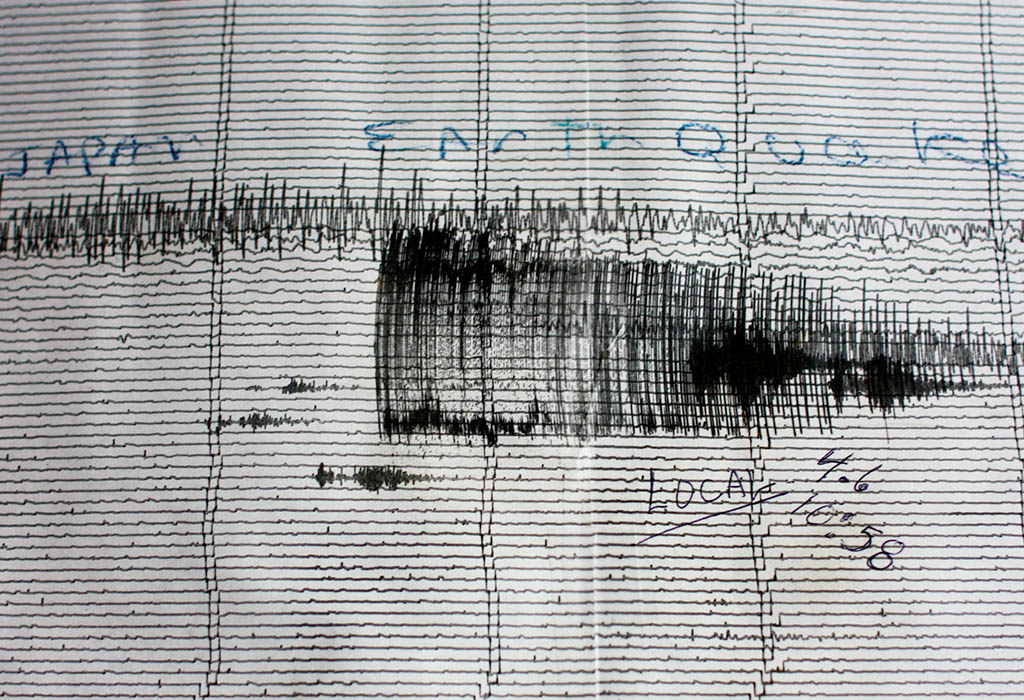What causes an earthquake?
When a big earthquake hits, it can be devastating—entire cities can be levelled, not to mention the loss of human lives. So what is going on when the ground starts shaking beneath our feet?
To find out we need to go deep underground. At the centre of our planet—around 5,000 to 6,000 kilometres beneath the surface—is an extremely hot, solid core, made mostly of iron and possibly nickel surrounded by a molten outer core (also thought to be made of mostly iron and some nickel). Further out we find another high-temperature layer, called the convecting mantle, which isn’t exactly molten, but some movement is still possible given sufficient time. This convecting mantle enables convection currents, driven by heat from the planet’s core, to ‘flow’ slowly within it.
The uppermost section of the mantle is relatively cool and brittle, and deforms elastically. Finally above this layer is the crust, the outermost layer of the planet (the bit we stand on). This coupled layer of crust and uppermost mantle is called the lithosphere and although it feels solid as we walk around on it, the lithosphere is actually very thin compared to the other layers of Earth—it ranges from less than 20 kilometres to more than 200 kilometres thick in different areas.

But unlike a smooth eggshell that you may imagine, the Earth’s crust is not a single, unbroken layer. Rather, it’s made of sections called tectonic plates that sit on top of the slowly flowing and moving mantle.
These plates do not stay still: over time, they migrate around the planet, sometimes grinding against each other, or pushing into each other to build mountain ranges. In other places where plates are moving towards each other, one plate is forced underneath another plate. The results are known as subduction zones, and the world’s largest earthquakes occur in these regions.

With all this dynamic movement constantly taking place all over the planet, big plates of rock moving around and bumping against each other, it’s no wonder that sometimes it gets a little unstable. As the plates move relative to each other, huge amounts of stress can build up over long periods of time. Eventually there comes a point when all the accumulated stress is suddenly released: rocks break and huge sections of crust are cracked and displaced. These movements result in waves of energy called seismic waves that radiate out in all directions. The waves travel into the interior of the planet and towards Earth’s surface. All this activity takes place deep within Earth, making it difficult to monitor and, therefore, difficult to predict when a future earthquake might occur.
It’s also no surprise that the most seismically active regions of the planet are found along the edges of the tectonic plates, but not all earthquakes occur along these boundaries. The entire continent of Australia is in the middle of a tectonic plate, with no part of it near a major plate boundary. Yet Australia is not immune: earthquakes still occur from time to time, such as the deadly 1989 earthquake in Newcastle with a magnitude of 5.4.
How do we measure earthquakes?
Earthquakes are measured using instruments called seismometers that detect the vibrations caused by seismic waves as they travel through the crust. Seismic waves can be both natural (from earthquakes) or caused by human activity (explosions). The concept of a seismometer is simple: a weight tends to stay still as the earth moves and the relative motion can be drawn on a reel of paper as a zig-zag line. The bigger the vibration, the bigger the zig-zag. Modern systems use electronics to give more accurate results but the principle is the same.

The strength (or ‘magnitude’) of earthquakes used to be determined according to the Richter Scale, which compares the relative strength of different earthquakes. The scale is logarithmic, meaning that an earthquake of magnitude 6 is ten times stronger than one of magnitude 5. A magnitude 7 quake is 10 times stronger than a magnitude 6, and 100 times stronger than a magnitude 5.
These days, although the term 'Richter Scale' still persists in the media and general use among the public, scientists now use a more accurate physical measure of the size of an earthquake, called the ‘moment magnitude’. This measures how strong the ground is (how much energy is needed to break it), how much actual displacement occurs, and the amount of rock that is displaced.
To give a sense of what different magnitudes feel like for people experiencing them, anything above a magnitude of 5.5 can cause damage to buildings, while anything greater than 7.0 will typically cause serious damage. Meanwhile, you’d probably sleep through anything less than a 2.5 and it would likely only be picked up by seismographs.
Earth is not as rock-solid as it may seem: it’s a dynamic planet, with a lot of activity taking place underneath the surface. As scientists continue to study its inner workings, we may be able to better predict the severity of earthquakes before they happen. Until then, there’s still a lot to learn.





